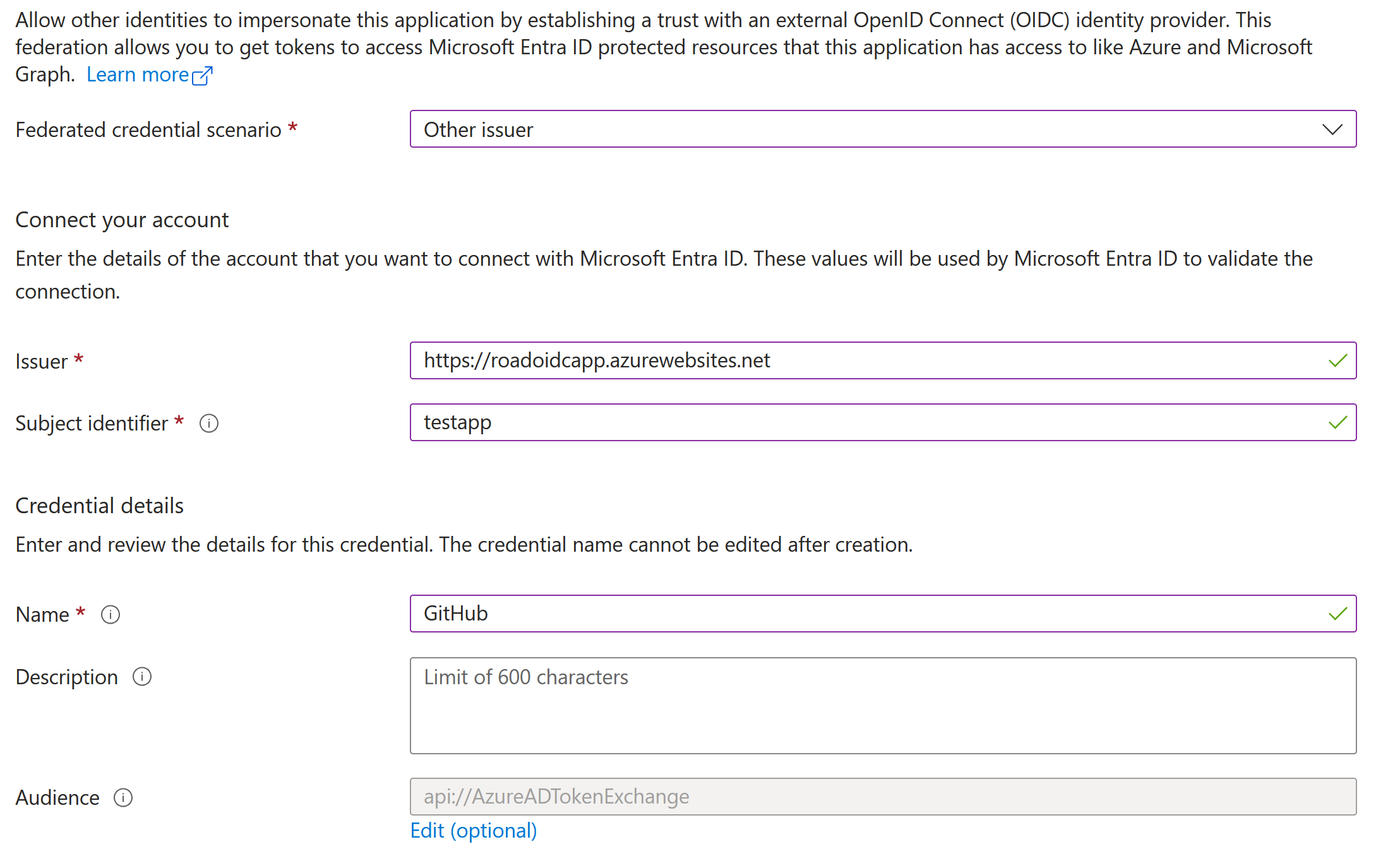Entra ID OIDC Discovery URL Modified
Detects a change to the OpenID Connect (OIDC) discovery URL in the Entra ID Authentication Methods Policy. This behavior may indicate an attempt to federate Entra ID with an attacker-controlled identity provider, enabling bypass of multi-factor authentication (MFA) and unauthorized access through bring-your-own IdP (BYOIDP) methods.
Elastic rule (View on GitHub)
1[metadata]
2creation_date = "2025/07/14"
3integration = ["azure"]
4maturity = "production"
5updated_date = "2025/12/10"
6
7[rule]
8author = ["Elastic"]
9description = """
10Detects a change to the OpenID Connect (OIDC) discovery URL in the Entra ID Authentication Methods Policy. This behavior
11may indicate an attempt to federate Entra ID with an attacker-controlled identity provider, enabling bypass of
12multi-factor authentication (MFA) and unauthorized access through bring-your-own IdP (BYOIDP) methods.
13"""
14from = "now-9m"
15interval = "8m"
16language = "esql"
17license = "Elastic License v2"
18name = "Entra ID OIDC Discovery URL Modified"
19note = """## Triage and analysis
20
21### Investigating Entra ID OIDC Discovery URL Modified
22
23This rule detects when the OIDC `discoveryUrl` is changed within the Entra ID Authentication Methods policy. Adversaries may leverage this to federate Entra ID with a rogue Identity Provider (IdP) under their control, allowing them to authenticate users with attacker-owned credentials and bypass MFA. This misconfiguration allows an attacker to impersonate valid users by issuing tokens via a third-party OIDC IdP while still passing validation in Entra ID. This technique has been publicly demonstrated and has critical implications for trust in federated identity.
24
25### Possible investigation steps
26- Review `azure.auditlogs.properties.initiated_by.user.userPrincipalName` and `ipAddress` to identify who made the change and from where.
27- Examine the `old_oidc_discovery` and `new_oidc_discovery` to confirm if the new `discoveryUrl` points to an unexpected or untrusted IdP.
28- Check that the discovery URLs have `.well-known/openid-configuration` endpoints, which are standard for OIDC providers.
29- Use `azure.auditlogs.properties.correlation_id` to pivot to related changes and activity from the same session.
30- Review any subsequent sign-in activity that may have originated from the new IdP.
31- Pivot to additional logs associated with the user or application that made the change to identify any further suspicious activity.
32
33### False positive analysis
34- Entra ID administrators may intentionally reconfigure OIDC trust relationships to support new business requirements.
35- Validate any changes with the identity or security operations team before taking action.
36
37### Response and remediation
38- If the change is unauthorized, immediately revert the discovery URL to the trusted IdP via the Entra ID portal.
39- Revoke tokens or sessions issued after the configuration change.
40- Investigate how the unauthorized change occurred (e.g., compromised account or over-privileged app).
41- Apply conditional access policies and change control procedures to protect IdP configuration changes.
42"""
43references = ["https://dirkjanm.io/persisting-with-federated-credentials-entra-apps-managed-identities/"]
44risk_score = 73
45rule_id = "498e4094-60e7-11f0-8847-f661ea17fbcd"
46severity = "high"
47tags = [
48 "Domain: Cloud",
49 "Domain: Identity",
50 "Data Source: Azure",
51 "Data Source: Microsoft Entra ID",
52 "Data Source: Microsoft Entra ID Audit Logs",
53 "Use Case: Identity and Access Audit",
54 "Tactic: Persistence",
55 "Resources: Investigation Guide",
56]
57timestamp_override = "event.ingested"
58type = "esql"
59
60query = '''
61from logs-azure.auditlogs-* metadata _id, _version, _index
62| where event.action == "Authentication Methods Policy Update"
63| eval Esql.azure_auditlogs_properties_target_resources_modified_properties_new_value_replace = replace(`azure.auditlogs.properties.target_resources.0.modified_properties.0.new_value`, "\\\\", "")
64| eval Esql.azure_auditlogs_properties_target_resources_modified_properties_old_value_replace = replace(`azure.auditlogs.properties.target_resources.0.modified_properties.0.old_value`, "\\\\", "")
65| dissect Esql.azure_auditlogs_properties_target_resources_modified_properties_new_value_replace "%{}discoveryUrl\":\"%{Esql.azure_auditlogs_properties_auth_oidc_discovery_url_new}\"}%{}"
66| dissect Esql.azure_auditlogs_properties_target_resources_modified_properties_old_value_replace "%{}discoveryUrl\":\"%{Esql.azure_auditlogs_properties_auth_oidc_discovery_url_old}\"}%{}"
67| where Esql.azure_auditlogs_properties_auth_oidc_discovery_url_new is not null and Esql.azure_auditlogs_properties_auth_oidc_discovery_url_old is not null
68| where Esql.azure_auditlogs_properties_auth_oidc_discovery_url_new != Esql.azure_auditlogs_properties_auth_oidc_discovery_url_old
69| keep
70 @timestamp,
71 event.action,
72 event.outcome,
73 azure.tenant_id,
74 azure.correlation_id,
75 azure.auditlogs.properties.activity_datetime,
76 azure.auditlogs.properties.operation_type,
77 azure.auditlogs.properties.initiated_by.user.userPrincipalName,
78 azure.auditlogs.properties.initiated_by.user.displayName,
79 azure.auditlogs.properties.initiated_by.user.ipAddress,
80 source.geo.city_name,
81 source.geo.region_name,
82 source.geo.country_name,
83 Esql.azure_auditlogs_properties_auth_oidc_discovery_url_new,
84 Esql.azure_auditlogs_properties_auth_oidc_discovery_url_old,
85 _id,
86 _version,
87 _index
88'''
89
90
91[[rule.threat]]
92framework = "MITRE ATT&CK"
93[[rule.threat.technique]]
94id = "T1556"
95name = "Modify Authentication Process"
96reference = "https://attack.mitre.org/techniques/T1556/"
97[[rule.threat.technique.subtechnique]]
98id = "T1556.009"
99name = "Conditional Access Policies"
100reference = "https://attack.mitre.org/techniques/T1556/009/"
101
102
103
104[rule.threat.tactic]
105id = "TA0003"
106name = "Persistence"
107reference = "https://attack.mitre.org/tactics/TA0003/"
Triage and analysis
Investigating Entra ID OIDC Discovery URL Modified
This rule detects when the OIDC discoveryUrl is changed within the Entra ID Authentication Methods policy. Adversaries may leverage this to federate Entra ID with a rogue Identity Provider (IdP) under their control, allowing them to authenticate users with attacker-owned credentials and bypass MFA. This misconfiguration allows an attacker to impersonate valid users by issuing tokens via a third-party OIDC IdP while still passing validation in Entra ID. This technique has been publicly demonstrated and has critical implications for trust in federated identity.
Possible investigation steps
- Review
azure.auditlogs.properties.initiated_by.user.userPrincipalNameandipAddressto identify who made the change and from where. - Examine the
old_oidc_discoveryandnew_oidc_discoveryto confirm if the newdiscoveryUrlpoints to an unexpected or untrusted IdP. - Check that the discovery URLs have
.well-known/openid-configurationendpoints, which are standard for OIDC providers. - Use
azure.auditlogs.properties.correlation_idto pivot to related changes and activity from the same session. - Review any subsequent sign-in activity that may have originated from the new IdP.
- Pivot to additional logs associated with the user or application that made the change to identify any further suspicious activity.
False positive analysis
- Entra ID administrators may intentionally reconfigure OIDC trust relationships to support new business requirements.
- Validate any changes with the identity or security operations team before taking action.
Response and remediation
- If the change is unauthorized, immediately revert the discovery URL to the trusted IdP via the Entra ID portal.
- Revoke tokens or sessions issued after the configuration change.
- Investigate how the unauthorized change occurred (e.g., compromised account or over-privileged app).
- Apply conditional access policies and change control procedures to protect IdP configuration changes.
References
Related rules
- Entra ID Device Registration Detected (ROADtools)
- Entra ID Global Administrator Role Assigned
- Entra ID MFA Disabled for User
- Entra ID ADRS Token Request by Microsoft Authentication Broker
- Entra ID Conditional Access Policy (CAP) Modified
